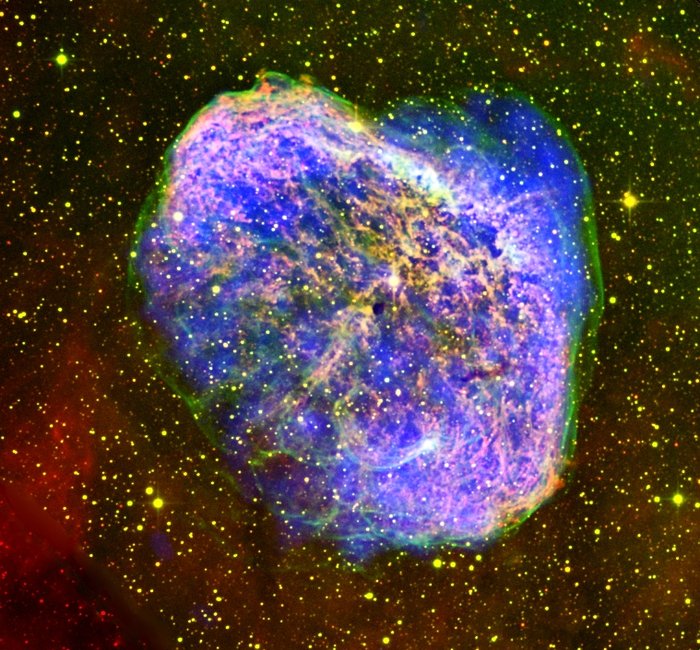
 Credit: ESA/XMM-Newton, J. Toalá & D. Goldman
Credit: ESA/XMM-Newton, J. Toalá & D. Goldman
New View of the Hot Crescent
Old massive stars emit copious amounts of radiation, but also copious amounts of matter. The matter is driven from the stellar surface by the star's radiation, and flows out into space at more than a million miles per hour in the form of a powerful stellar wind. This wind slams into the gas and dust around the star, pushing it out and evacuating a large space, a "bubble", around the star. A beautiful example of a wind-blown bubble is NGC 6888, the Crescent Nebula, shown above in the composite optical and X-ray image. The bubble is not perfectly spherical due to variations in the amount of matter in the surrounding interstellar medium. These density differences also give rise to the bright knots and filaments seen in the image. The bubble is hot, glowing brightly in X-rays, which can be seen as the blue haze in the image. The green glow around the nebula is optical emission produced by oxygen atoms which are recombining with their electrons at the cooler outer surface of the bubble. The X-ray image of the Crescent was obtained by the sensitive detectors of the XMM-Newton X-ray space observatory. Oddly enough, the Crescent is actually located in a particular region of the sky which was inaccessible to XMM-Newton for years, a "blind spot" in the sky for the observatory. But the orbit of XMM-Newton (and all satellites in space) shifts slightly with time, due to different gravitational forces on the spacecraft, so that this location became visible to XMM-Newton in 2014, nearly 15 years after launch. The beautiful image above shows the observation was well worth the wait.
Published: February 26, 2018
<
HEA Dictionary ● Archive
● Search HEAPOW
● Other Languages
● HEAPOW on Facebook
● Download all Images
● Education ● HEAD
>

Each week the HEASARC
brings you new, exciting and beautiful images from X-ray and Gamma ray
astronomy. Check back each week and be sure to check out the HEAPOW archive!
Page Author: Dr. Michael F. Corcoran
Last modified Monday, 26-Feb-2024 17:45:09 EST


